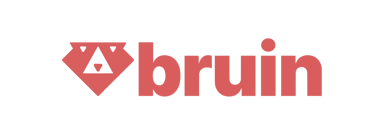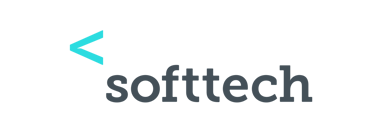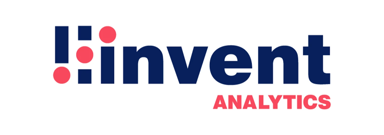Recruitment
Recruitment is the backbone of any successful organization. It isn't just about filling open positions; it's the cornerstone of building a high-performing workforce that fuels your organization's growth and innovation.
By actively seeking out, attracting, evaluating, and hiring the best possible talent, you are laying the foundation for a successful future.
Whether you're a seasoned HR professional or just starting out, this guide will equip you with the knowledge and strategies to build a winning recruitment strategy and attract the top talent your company deserves.
Recruitment Definition
Recruitment is the process of finding and hiring the best-qualified candidate (from within or outside of an organization) for a job opening, in a timely and cost-effective manner. It includes analyzing the requirements of a job, attracting employees to that job, screening and selecting applicants, hiring, and integrating the new employee to the organization.
The Recruitment Process
The recruitment process is a multi-step procedure, starting with identifying a need and concluding in onboarding a new hire. Here are the key stages👇:
1. Identifying the Need
This initial step involves recognizing the need for a new employee, which could be due to various reasons such as expansion, resignation, or new projects.
2. Job Analysis and Description
This step involves defining the role's responsibilities, skills required, expectations, and ideal candidate profile.
3. Sourcing Candidates
Attract qualified individuals through various channels like job boards, social media recruiting, employee referrals, and recruitment agencies.
4. Screening and Shortlisting
Review resumes and applications to select potential candidates who best match the job requirements.
5. Interviews and Assessments
Evaluate shortlisted candidates through interviews, tests, and simulations to assess their qualifications and cultural fit.
6. Selection and Offer
Choose the most suitable candidate and extend a formal job offer with a competitive compensation package.
7. Onboarding
Welcome the new hire, integrate them into the team, and provide them with the necessary resources and training for success.
Types of Recruitment
The recruitment approach you choose depends on the specific needs of the role and your company culture. Here are some common types👌:
Internal Recruitment
Promoting or transferring existing employees within the organization.
External Recruitment
Attracting talent outside the company through job boards, social media, and recruitment agencies.
Direct Sourcing
Proactively targeting high-potential candidates through networking events, industry conferences, or contacting them directly.
Employee Referrals
Leveraging the power of an existing workforce to attract qualified individuals with similar values and experience.
Third-Party Recruitment
Utilizing recruitment agencies or headhunters to find suitable candidates.
Partnering with Recruitment Agencies
Recruitment agencies act as an extension of your HR team, specializing in sourcing and screening candidates for a fee. Here's how they can benefit your organization 💫:
- Access to a wider talent pool: Agencies have established networks and expertise to find niche talent you might miss on your own.
- Efficiency and timesaving: Recruiters can handle the initial screening and interviewing stages, freeing up your HR team for other tasks.
- Industry expertise: Many agencies specialize in specific sectors and provide valuable insights into the current job market and competitive compensation packages.
Recruitment vs Staffing
While both recruitment and staffing involve filling job openings, there are some key distinctions ⚖️:
Recruitment focuses on finding the perfect fit for your company culture and long-term needs. Staffing often focuses on filling temporary or contract positions.
In recruitment, the new hire becomes a direct employee of the company. Staffing agencies often employ the individual and then assign them to the company on a temporary basis.
Recruitment typically involves internal HR resources or fixed costs for recruitment agencies. Staffing agencies often charge a fee based on a percentage of the temporary employee's salary.
Recruitment Tips for HR Professionals
Crafting a Compelling Job Description:
- Highlight the company culture and employee benefits.
- Focus on the impact and purpose of the role.
- Use clear and concise language.
- Tailor the description to the specific position.
Optimizing Recruitment Process:
- Utilize applicant tracking systems (ATS) to streamline applications and communication.
- Promote employer branding through social media and company culture initiatives.
- Emphasize a positive candidate experience with timely communication and feedback.
Staying Ahead of the Curve:
- Embrace innovative recruitment techniques like video interviews and virtual assessments.
- Prioritize diversity and inclusion in your recruitment strategy.
- Leverage data analytics to track recruitment metrics and measure the effectiveness of your efforts.
Effective Recruitment Techniques to Attract Top Talent
Beyond the standard recruitment process, here are some effective techniques to attract high-caliber individuals to your company:
- Employee Value Proposition (EVP): Develop a compelling EVP that showcases your company culture, unique benefits, and career growth opportunities.
- Employer Branding: Craft a strong employer brand that positions your company as a desirable workplace on social media and career websites.
- Targeted Social Media Recruiting: Utilize social media platforms like LinkedIn to target specific demographics and skill sets.
- Candidate Relationship Management (CRM): Build relationships with potential candidates and nurture them through the recruitment process.
- Contests and Challenges: Host online contests or hackathons to attract innovative thinkers and showcase your company culture in a fun way.
- Referral Programs: Incentivize your employees to refer qualified candidates from their network.
The Recruitment-Retention Connection
Recruitment doesn't end with only filling the position. Building a strong recruitment strategy goes together with retention efforts to create a loyal and engaged workforce. Here's how 👇:
- Onboarding is Key: A well-structured onboarding program helps new hires integrate seamlessly into the company culture and sets them up for success.
- Invest in Employee Development: Offer training and development opportunities to help your employees grow their skills and advance their careers within your company.
- Promote Work-Life Balance: Offer flexible work arrangements, competitive benefits packages, and a positive work environment to retain your top talent.
- Open Communication and Feedback: Encourage open communication channels and regular performance reviews to ensure employee satisfaction and address any concerns promptly.
- Recognition and Rewards: Regularly acknowledge and reward employees' contributions.
By implementing these recruitment strategies and fostering a positive work environment, HR professionals can build a strong talent pipeline and attract, hire, and retain the brightest individuals to drive your company's success.
Recruitment Tools to Enhance Your Hiring Process ️
Several recruitment tools can significantly streamline and optimize your hiring process:
- Social Media Recruiting Tools: Identify and connect with potential candidates on popular social media platforms. These tools can help you search for candidates based on skills, experience, and even location.
- Video Interviewing Platforms: Conduct remote interviews conveniently and cost-effectively. Video interviews are a great way to screen candidates from a wider pool and save on travel expenses.
- Skills Assessments: Evaluate candidates' abilities and knowledge objectively. Skills assessments can be used to test for technical skills, soft skills, and even cultural fit.
- Background Check Tools: Verify a candidate's identity, employment history, and education credentials. Background checks can help you eliminate risk and ensure you're hiring qualified individuals.
- Applicant Tracking Systems (ATS): Manage applications, schedule interviews, and track candidate progress efficiently. These systems can also help you filter resumes based on keywords and qualifications, saving you valuable time.
Don't let recruitment overwhelm you. An ATS is the all-in-one solution to streamline your hiring process. Filter resumes with pinpoint accuracy thanks to intelligent parsing technology. Schedule interviews in seconds, keeping candidates and hiring managers happy. Engage applicants with personalized communication throughout the process.
Hirex even provides valuable data to help you identify top talent faster and optimize your recruitment strategy. Focus on attracting the best, while Hirex handles the rest. ⭐️
Get a demo
- Quickly find top candidates with smart application management
- Improve team collaboration using built-in communication and workflows
- Offer a smooth candidate experience to strengthen your employer brand
- Count on 24/7 support for a hassle-free hiring process
- Quickly find top candidates with smart application management
- Improve team collaboration using built-in communication and workflows
- Offer a smooth candidate experience to strengthen your employer brand
- Count on 24/7 support for a hassle-free hiring process
"We truly felt the speed difference. Everything was smoother, and candidate feedback was much more positive. It made our jobs easier."

Trusted by 100+ teams
Get Informed,F.A.Q.
Revolutionize your hiring process with our transformative Applicant Tracking System (ATS.)
Suggested keywords
What is Cultural Fit?
Let's talk numbers - 89% of employers put cultural fit at the top of their hiring checklist. Pretty huge. But wait a second... what exactly does cultural fit mean in today's fast-moving workplace?The ...
Employee NPS Benchmarks
An Employee NPS benchmark is basically a way to see how your company’s employee satisfaction stacks up against others. It helps turn your eNPS score into something useful by giving it context. 📌You'r...
Salary Benchmarking
Salary benchmarking is basically figuring out if what you're paying your team makes sense compared to what others are offering for similar roles. It’s like checking the going rate before you buy somet...















